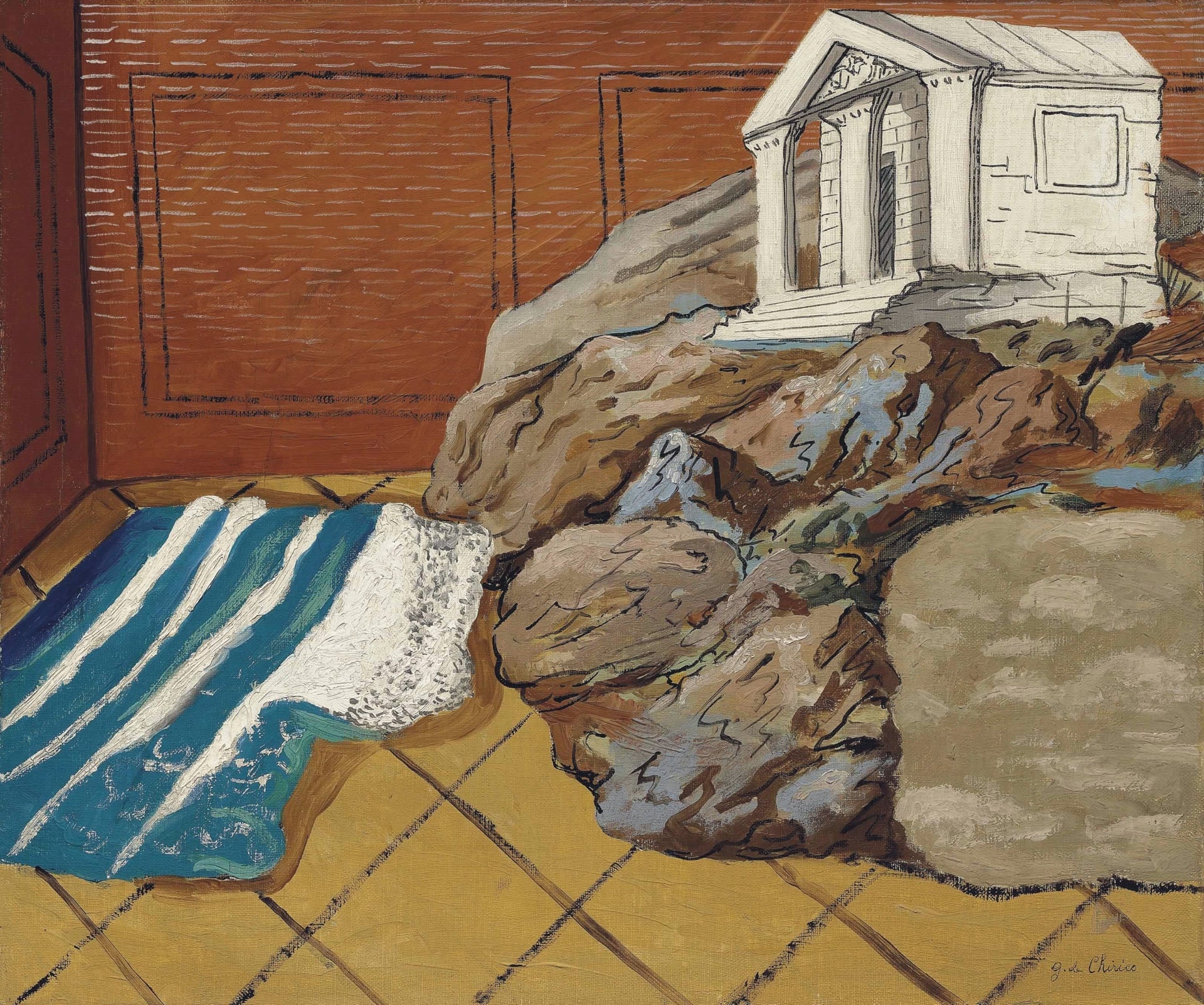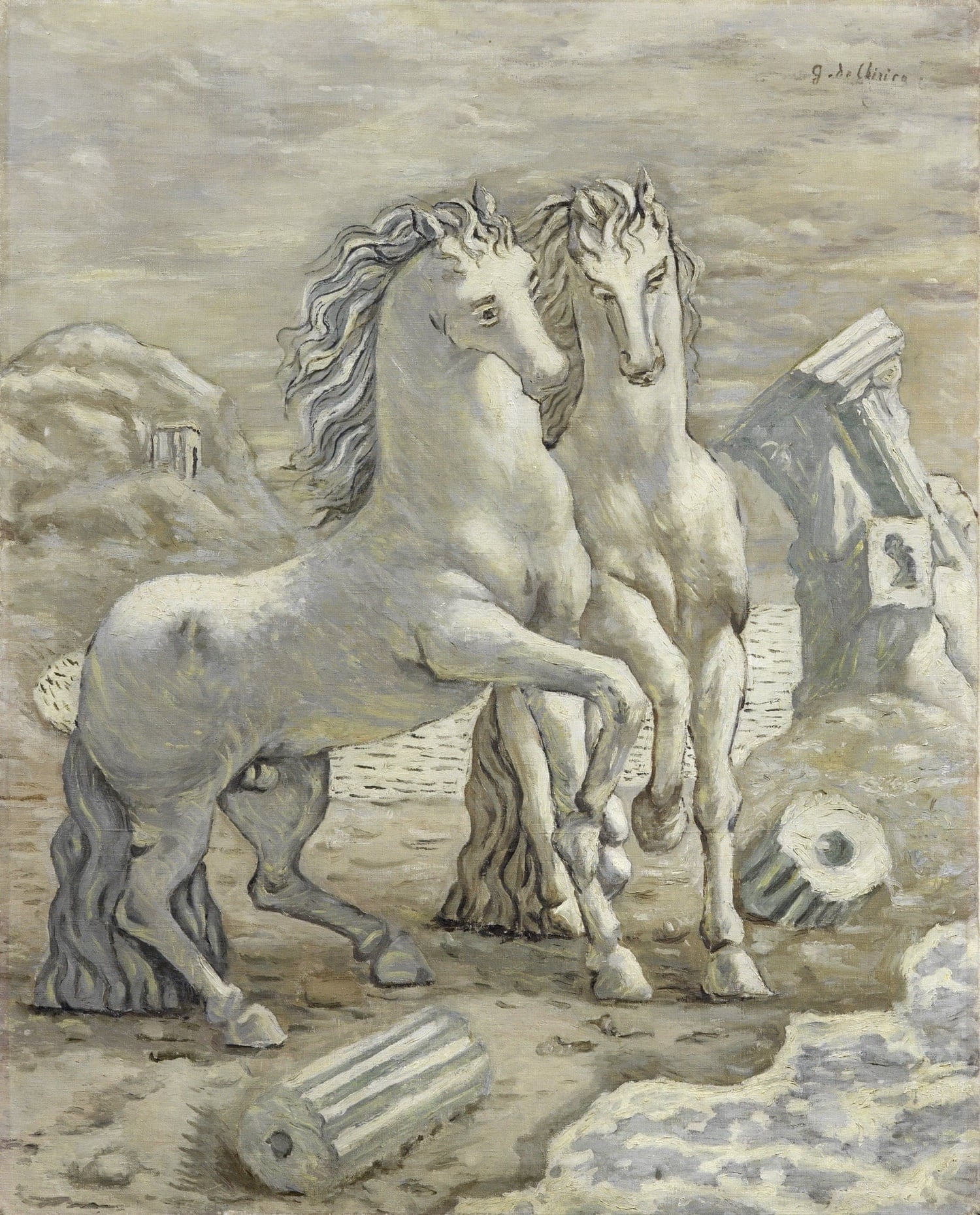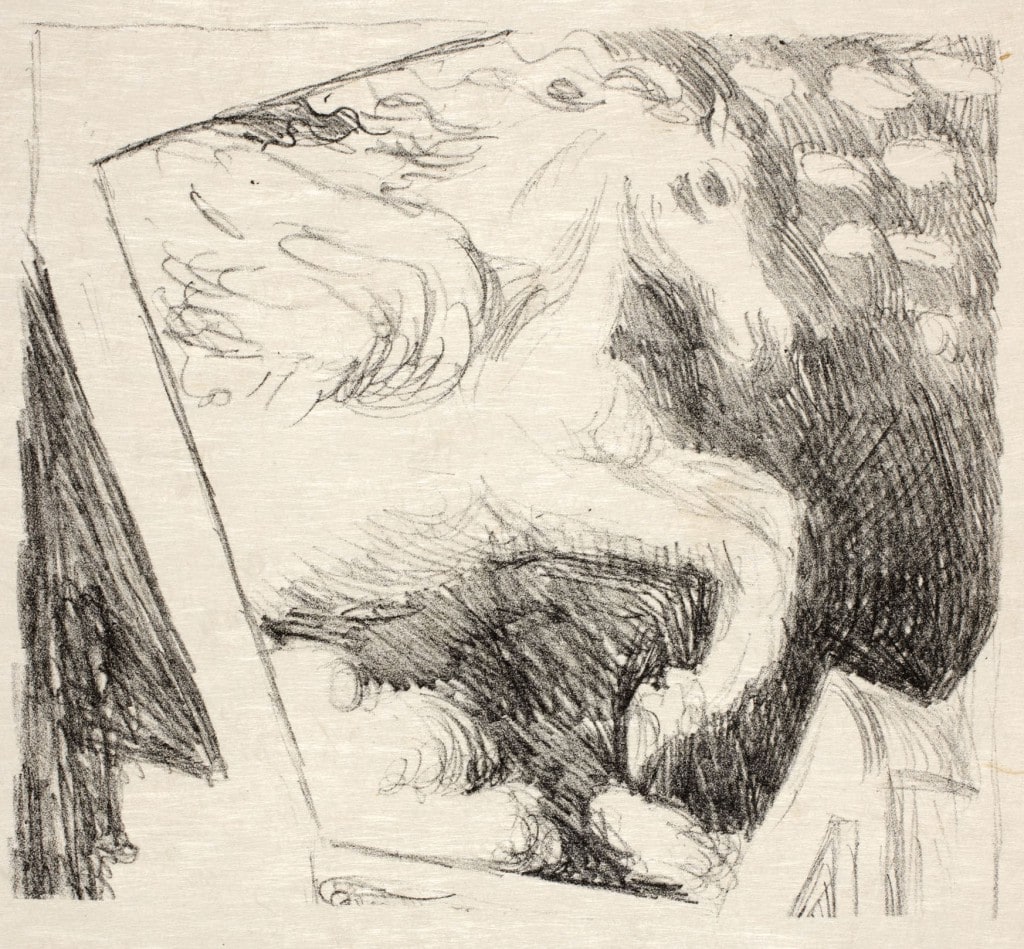24 March 2016
Pera Museum is proud to present an exhibition of Giorgio de Chirico, a pioneer of the metaphysical art movement and one of the most extraordinary artists of the 20th century. This part of Giorgio de Chirico: The Enigma of the World exhibition, called “Between Surrealism and Mediterranean Myth (1924 -1935)” illustrates de Chirico’s relations with Surrealist artists and the important artworks he created during his first years in Paris.
Between Surrealism and Mediterranean Myth (1924 -1935)
 Temple in a Room, c. 1926, Oil on canvas, 46,7 x 55,2 cm.
Temple in a Room, c. 1926, Oil on canvas, 46,7 x 55,2 cm.
A. Pallesi̇ Art Gallery Collection, Monaco
During the early 1920s, André Breton, the founder of Surrealism, together with Paul Éluard, the Surrealist French poet, made contact with de Chirico and enjoyed a brief convergence de vues between 1923-1925. Breton was profoundly taken by the artist’s metaphysical production of 1910-1918, much of which he and the Surrealists had acquired in Paris soon after the war. Attracted by this interest, de Chirico moved to Paris with his companion Raissa Gourevitch in late 1925. The transition marked another stylistic change, with de Chirico developing much new and highly original subject matter such as Furniture in the Valley, The Gladiators, Trophies, Sun on the Easel, The Archeologists and Horses on the Seashore.
 Horses And Ruins on the Seashore, 1927, Oil on canvas, 91,7 x 73,7 cm.
Horses And Ruins on the Seashore, 1927, Oil on canvas, 91,7 x 73,7 cm.
Courtesy Farsetti Arte, Prato
The Surrealist insistence, however, on the geniality of the artist’s early artistic output, to the complete detriment of his post-1918 work, soon became a point of irreparable contention, and their relationship definitively ruptured in 1926. From that moment forth, de Chirico would find himself having to defend his post-1918 artistic choices as well as counter Surrealist-led defamatory accusations including the phenomenon of forged works; it was the Surrealists were actually the first to fake his work.

Highlighting his various periods with examples from his earliest works to last ones, Giorgio de Chirico: The Enigma of the World exhibition took place at the Pera Museum between 24 February - 08 May 2016.

The Suna and İnan Kıraç Foundation’s Orientalist Painting Collection includes two children’s portraits that are often featured in exhibitions on the second floor of the Pera Museum. These portraits both date back to the early 20th century, and were made four years apart. One depicts Prince Abdürrahim Efendi, son of Sultan Abdulhamid II, while the figure portrayed on the other is Nazlı, the daughter of Osman Hamdi Bey.

Pera Museum, in collaboration with Istanbul Foundation for Culture and Arts (İKSV), is one of the main venues for this year’s 15th Istanbul Biennial from 16 September to 12 November 2017. Through the biennial, we will be sharing detailed information about the artists and the artworks.
Tuesday - Saturday 10:00 - 19:00
Friday 10:00 - 22:00
Sunday 12:00 - 18:00
The museum is closed on Mondays.
On Wednesdays, the students can
visit the museum free of admission.
Full ticket: 300 TL
Discounted: 150 TL
Groups: 200 TL (minimum 10 people)